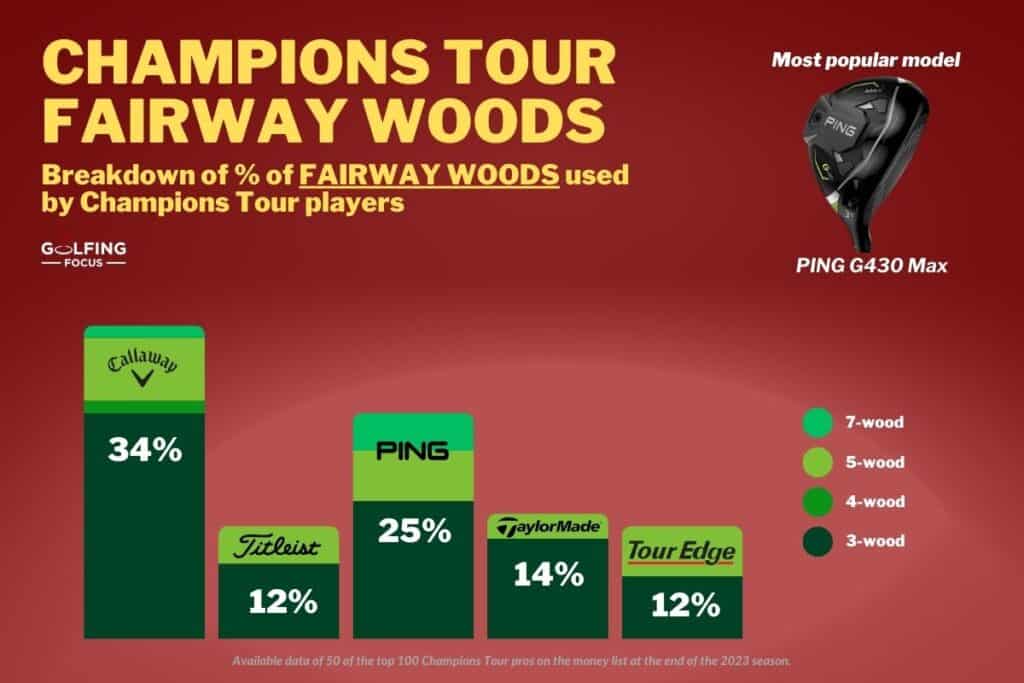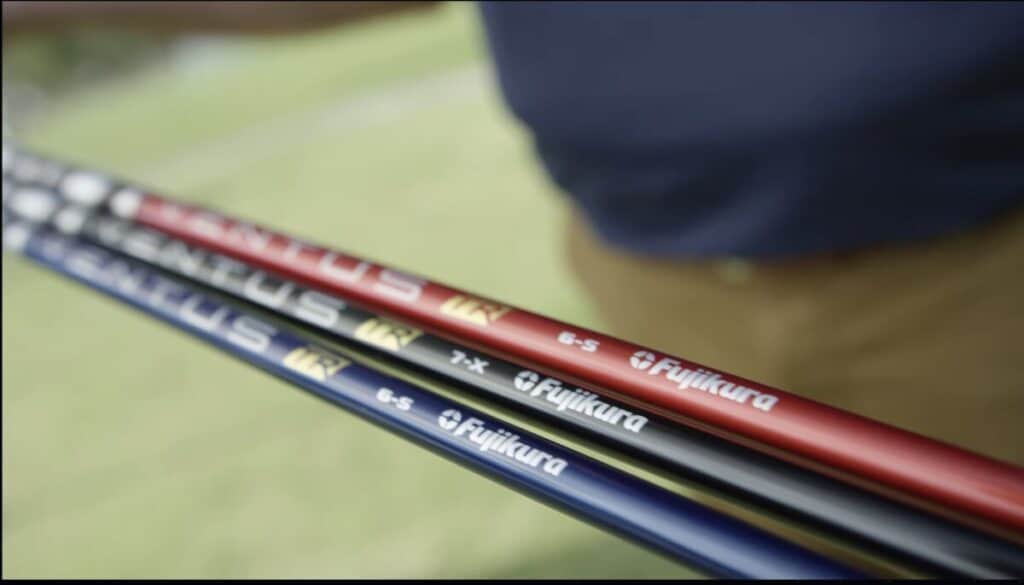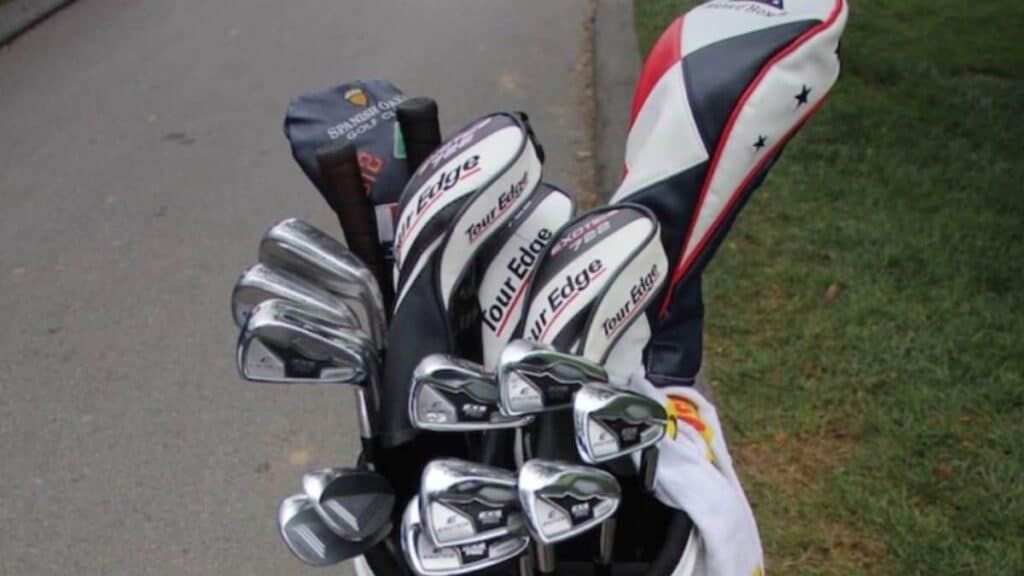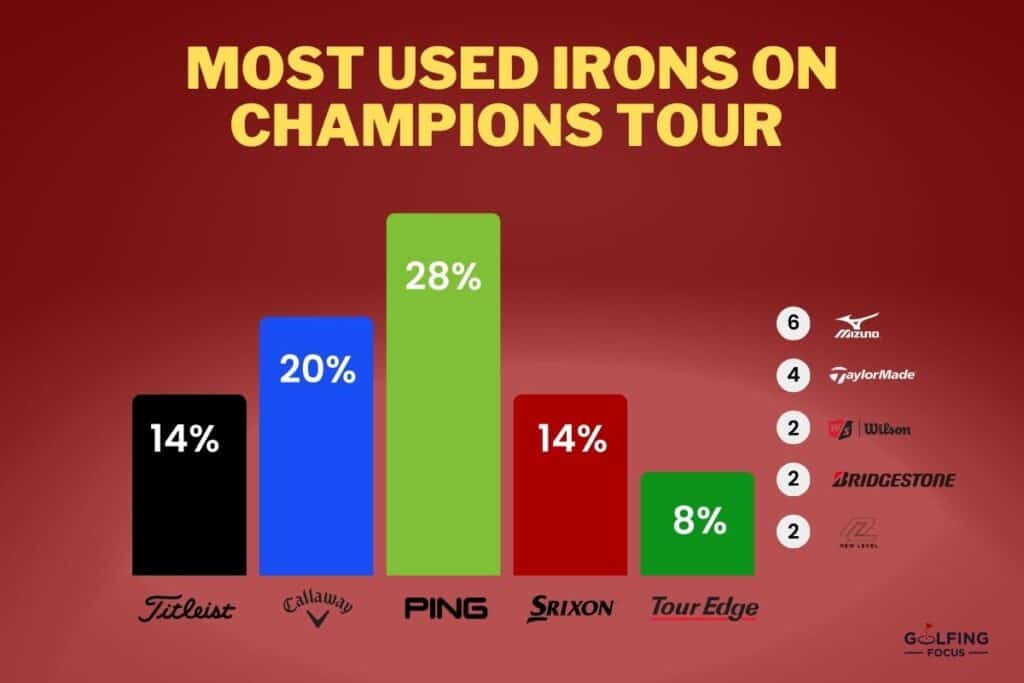Do Pros Use Game Improvement Irons? They Also Want Forgiveness!

When it comes to making choices as to what irons you should use it is natural for regular golfers to wonder what the pros are playing with.
Knowing you are playing the same irons as some of the top golfers in the world is a good feeling and many amateurs often wonder if the iron choices of the pros ever stretch to ‘game improvement’ irons which are targeted by the club manufacturers mainly at mid-handicappers from 12 or so to the low 20s.
None of the pros on the PGA Tour pros use game improvement irons. However 19 of the top 100 PGA pros carry at least one ‘players’ distance iron’ in their bag which are only one ‘forgiveness’ category below game improvement irons. John Huh has previously used a complete set of TaylorMade P770 players’ distance irons.
That the best golfers in the world do not use irons that are designed specifically for the needs of mid-handicappers is perhaps not surprising but what is equally clear is that the pros also do not seek to make the game harder by not taking advantage of the benefits afforded by modern golf club technology.
Just like the average player the pros find certain iron shots difficult and as a result do not follow conventional wisdoms when it comes to their iron choices which many amateurs often assume they do.

Why Don’t Pros Use Game Improvement Irons?
For all golfers in the past, both amateurs and professionals, there was only one type of iron to choose from but as golf club technology has exploded over the last few decades there are now a wide variety of options available, including game improvement irons.
And in brief game improvement irons – or ‘mid-handicapper irons’ as they are also often called – are irons that feature wider soles, larger heads, and perimeter weighting in a package that is intended to look not enormously different from classic irons.
Examples include Callaway’s Apex 21DCB, Titleist’s T300, TaylorMade’s Stealth, and PING’s G430 irons and the principal reason for their design is to try and minimize the distance lost from shots that are struck in different parts of the head away from the sweet spot.
In other words they are aiming to offer plenty of forgiveness to players who frequently struggle to hit the centre of the iron face with each shot.
At the opposite end of the spectrum there are ‘blade‘ irons, which are the least forgiving iron type, and made for elite back strikers
The table below illustrates the main category types of iron together with which standard of player they are targeted at.
| IRON GROUP | IRON CATEGORY | FORGIVENESS LEVEL | TYPICAL PLAYER / HANDICAP | EXAMPLES |
| Blades | Blade Irons | 1. Very low | Elite golfers | Callaway Apex MB, PING Blueprint, TaylorMade P730, Titleist 620MB |
| Cavity Backs | Players’ Irons | 2. Low | Low single figures to elite golfers | Callaway Apew TCB, Cobra King Tour, Srixon ZX7, Titleist T100 |
| Cavity Backs | Players’ Distance Irons | 3. Medium | Low double-digit to single figures | Callaway Paradym, PING i525, TaylorMade P790, Wilson D9 Forged |
| Cavity Backs | Game Improvement Irons | 4. High | Low 20s handicap to double digit | Callaway Paradym X, Cleveland Launcher XL, Titleist T300 |
| Cavity Backs / Hybrid Irons | Super Game Improvement Irons | 5. Very high | Beginner or high 20s handicap and above | Callaway Big Bertha, TaylorMade Stealth HD, Titleist T400, Wilson D9 |
Since PING invented the original ‘Eye’ cavity iron in the 1960s in an effort to help golfers who struggled with striking their blade irons well, ‘cavity back’ irons have evolved to dominate the golf market and to such an extent that there are 4 different sub-categories of cavity backs.
Each iron category aims to offer something different to different standards of golfer but in brief the less forgiving a cavity back iron the more it is trying to retain some of the charactertics and advantages of a blade iron.
And with each move away from the ‘blade’ end of the spectrum the golf club manufacturers take, the more golfers lose of the positive elements and advantages of using blades.
Nothing is ever a complete ‘win win’ in golf club design so while cavity backs are easier to hit and allow mishit shots to go further and not as far offline, there are drawbacks to their use also and that is why in short pros typically choose not to stray too far away from the charasteristics of a blade iron.
As a whole pros do not use game improvement irons because they make it harder to shape (i.e. draw or fade) the ball and hit precise approach shots the correct distance. Game improvement irons also do not give pros enough feedback on the quality of their strike which they rely on to judge how well they are swinging.
For every ‘pro’ you get from a category of cavity back iron, as you go further up the spectrum away from blade irons, there is a ‘con’ and for the top players in the world there are just too many cons with game improvement irons.
However while pros do not use game improvement irons do not think for one minute that means they don’t need all the help they can get just like regular amateur players.
We go into detail here of every iron being played by the top 100 pros in the PGA Tour but the fact that 19 of them, are using at least one iron from the category just below game improvement irons – so called ‘players’ distance irons’ – highlights how even the best pros need some forgiveness when they hit an iron badly.
And the fact that this group includes major champions such as Collin Morikawa, Shane Lowry and Keegan Bradley – and also that only 12% of the top 100 are carrying just ‘blade’ irons in their bag – highlights how almost every single golfer in the world is looking for some help from technology with their irons!
“I joke around, ‘I’m not good enough to play the blades,’ but in reality, I think we’re just being smarter. I think we’re just like, ‘Oh, we can actually hit every shot that a blade can hit.’ But that chance that we mishit them – which we’re going to mishit a few shots in a round, even in a great round, the idea that it does carry that bunker and you make birdie on a hole where someone has to get up-and-down for par – I mean, it could be the difference in a tournament.”
Jordan Speith, 3-time major champion
Do Pros Use Forgiving Clubs? Even the Best Need Some Help!
That the best players in the world are looking for as much help from their clubs as possible from a forgiveness perspective is further evidenced in other areas of their golf bag.
Hitting long irons consistently well has also been an eternal challenge in golf and one which even the best pro golfers in the world have always found just as difficult as regular amateurs do.
As a result in this area especially we again find the top pros more than willing to get some help from more forgiving clubs.
33% of the top 100 PGA Tour pros use more forgiving and easier to hit hybrid clubs to replace 1, 2, 3 and 4-irons. A further 28 of this elite group use more forgiving ‘driving/utility’ 2, 3 and 4-irons in addition to the 88 pros who carry at least one cavity back iron in their bags in preference to less forgiving blades.
That the pros are clearly willing to embrace more forgiving clubs, especially in their long club set up, highlights not only how hard golf is to play but also why average players should be embracing as many of the advances offered by golf club tech development in the last couple of decades in particular as possible.
When it comes to hybrids for example there is no question in our minds they should be a key piece of equipment in the golf bag of the vast majority of amateurs and we discuss in detail here 7 of the reasons why they are more forgiving and easier to hit.
So the next time you find yourself wondering whether pros use forgiving clubs we hope you are by now convinced that even the best players in the world have many of the same struggles you do and hit bad shots. And as a result they also need some forgiveness in their club set up!

Should You Use Game Improvement Irons? Be Wary of a Switch!
Given what we have found in our detailed analysis of the iron and club choices of the top 100 pros on the PGA Tour the next question you should probably quickly focus on whether you are taking advantage of the advantages afforded by modern clubs and irons in the same way the pros do.
And given the average handicap for male golfers in the USA is bang in the middle of the mid-handicap range at 14.4 it would seem most appropriate for that question to centre around whether you should be using game improvement irons or not.
As a whole ‘mid-handicapper’ golfers – low 20s to low double-digit – should use game improvement irons as they cause the poor ‘off centre’ strikes that these players often hit to go straighter and lose less distance. Only players getting close to a single figure handicap should consider switching to player distance irons.
And the word ‘consider’ in that last sentence is used very deliberately.
‘When is the best time to ‘upgrade’ your irons’, is a very common question in golfing circles as amateurs frequently believe certain clubs to be almost like a ‘right of passage’ that reflect their improving standard of play.
I for one in my younger days was convinced that I could only truly consider myself to be a’ good golfer’ once I was playing with a set of ‘blades’.
Given the approach of the pros to their irons however we should now all be convinced, if you weren’t already, that such thinking is not particularly helpful and makes an already very difficult game even harder.
We all have visions of what ‘beautiful irons’ should look like and it true there is nothing much like the site of a gleaming set of new blade irons.
And indeed that is the reason why golf club manufacturers go to such lengths to ensure their game improvements irons, such as TaylorMade’s Stealth or Callaway’s Paradym X irons, look great and not a million miles away from a beautiful set of classic irons.
But if you are ever wondering whether it is time to ‘upgrade’ and stop using your game improvement irons, because your improving handicap suggests you should be looking at something ‘less forgiving’, we would always counsel against making a change just for the sake of it.
Golf is a game of ‘how’ and not ‘how many’ and if your current set of irons are doing a great job for you we would suggest simply sticking with them.
Good golf scores are most often determined by how good your ‘bad’ shots are, and ‘game improvement’ irons, with their high level of forgiveness, are specifically designed to help minimise the damage of exactly those so think very carefully before giving that up!
More top posts related to this topic:
- What Irons Do the Pros Use? Top 100 PGA Tour Player Guide
- What Driving Irons do the Pros Use on the PGA Tour?
- What Hybrid Golf Clubs Do the Top 100 PGA Tour Pros Use?
- What Clubs Do Pro Golfers Use? Top 100 PGA Tour Player Guide
- Do Pros Use Graphite or Steel Shafts? It Depends Which Club
- Do Pros Use Regular or Stiff Shafts? They’re Stronger Than That!
- What Irons Do LPGA Players Use? Top 50 Pros Analysis
- What Clubs do LPGA players use? Top 50 Player Breakdown
- Are There Any PGA Tour Pros Without a Hole in One?
- Do Golf Pros Wear Metal Spikes? But They are Banned!
- Should I Play Blades or Cavity Back Irons? Use Your Head
- What Hybrids Should You Carry? It’s All About Ego
- How Far Should I Hit My Irons? By Handicap, Age & Swingspeed
- Should Your Wedges Match Your Irons? Consistency is Key
- What is the Most Difficult Golf Club to Hit? Take it Easy!
RECENT ARTICLES
LEGAL INFORMATION
This site is owned and operated by Golfing Focus Limited, a private limited company whose registered office is in London, UK. Golfing Focus Limited is a participant in the Amazon Services LLC Associates Program, an affiliate advertising program designed to provide a means for sites to earn advertising fees (at no cost to you) by linking to Amazon.com. Golfing Focus Limited also participates in other affiliate programs with the eBay Partner Network, FlexOffers, CJ.com, Svorn and other sites and is compensated for referring traffic and business to these companies (again at no cost to you).
Our Socials






Leave a Reply